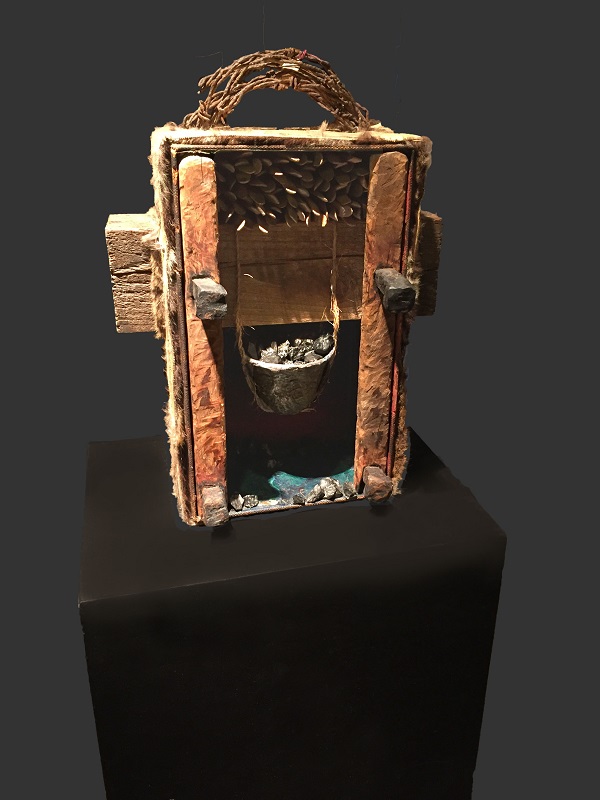Past exhibit or collection
Something From the Collections
 In 1979 the First Presbyterian Church of Wheaton, under the leadership of Fran Brocker, inaugurated Sacred Arts, a national juried annual art exhibition. In 1984, James Stambaugh, Director of the Billy Graham Center Museum partnered with the First Presbyterian Church of Wheaton and hosted these exhibitions on an annual basis until 1998.
In 1979 the First Presbyterian Church of Wheaton, under the leadership of Fran Brocker, inaugurated Sacred Arts, a national juried annual art exhibition. In 1984, James Stambaugh, Director of the Billy Graham Center Museum partnered with the First Presbyterian Church of Wheaton and hosted these exhibitions on an annual basis until 1998.
The present exhibition is drawn from artworks in the Billy Graham Center Museum collection and includes works that were exhibited in Sacred Arts shows or acquired from artists associated with these exhibitions. It is thanks to the dedication and vision of former Museum Director James Stambaugh that we have this artistic record that shows how contemporary artists addressed religious content during the fourteen years that the Billy Graham Center Museum hosted Sacred Arts exhibitions.
Sacred Arts at the Billy Graham Center Museum presents a view of art making that is predominantly figurative. Most of the artworks depend for their effect upon recognizable subject matter. Many of the works derive from scriptural texts and in this regard the exhibition suggests that the artists are “people of the Book.” There is often a close connection between the written word and the visual images produced.
Even so, there is much room for poetry, for imaginative leaps across open gulfs stringing word to image. Sometimes these leaps are short and the relationship to scriptural content is easy to grasp, sometimes the leaps are longer and we must stretch to sense the nature of the intended connection. In almost every case the artists give us a starting place in the familiar world. They present things with which we are acquainted as the basis for reflection on extraordinary spiritual things.
When such familiar clues are absent, as in the abstract works in the show, we look to the artist’s hand for a guide. Here we often see the gestures of an indecipherable writing, the construction of unknown symbols, a kind of calligraphic glossolalia. Perhaps the artists intend to show that words can be understood in imagistic as well as literal terms. The absence of subject matter may be a way to address the unfathomable aspects of faith.
Writing in 1997 James Stambaugh said of exhibitions like the Sacred Arts shows that they, “…are designed to inspire, entertain, and educate our visitors. Importantly, they are also meant to be evangelistic in their own right and it could truly be said that they demonstrate the myriad ways the Gospel can be expressed.”
